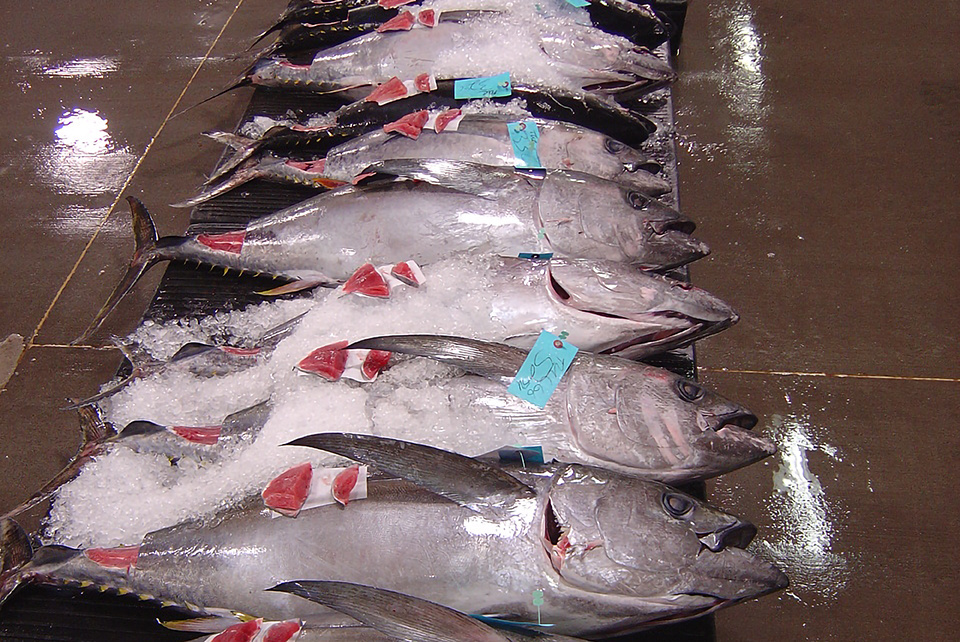About 87 percent of the worldwide commercial catch of tuna is coming from stocks seen at healthy levels of abundance, although some regional stocks including Pacific bluefin are overfished, the International Seafood Sustainability Foundation says in a new status report.
Based on findings by regional fishery management organizations though October 2020, the summary by the foundation – a cooperative program involving scientists, the tuna industry and World Wildlife Fund – breaks down 10 percent of the world catch coming from overfished stocks and 3 percent from stocks “at an intermediate level of abundance.”
The report summary states “87 percent of the total catch comes from healthy stocks in terms of abundance. This is due to the fact that skipjack stocks contribute more than one half of the global catch of tunas, and they are all in a healthy situation.
“In contrast, one bluefin stock, one yellowfin stock and one bigeye stock are overfished; resulting that 10 percent of the total catch comes from overfished stocks. With regard to exploitation, 86 percent of the total catches comes from stocks that are not experiencing overfishing.”
Along with Pacific bluefin, the report points to other overfishing problems for Atlantic bigeye, and in the Indian Ocean, where yellowfin, bigeye and albacore are all judged to be overfished.
The group is keeping an eye too on the Eastern Pacific, where it downgraded the abundance of bigeye from a “green” to “yellow” cautionary rating since the last foundation report in March 2020. But the fishing mortality rating for Eastern Pacific bigeye has improved, the group says.
“Both the fishing mortality rate ratio and abundance rating for Eastern Pacific Ocean yellowfin have improved from orange to green,” the report notes. “This was primarily due to changes in the stock assessment methodology used.”
Other facts cited in the report:
• Total catch: The catch of major commercial tuna stocks was 5.2 million metric tons in 2018, an 8 percent increase from 2017. Skipjack tuna accounted for 58 percent, followed by yellowfin (29 percent), bigeye (8 percent) and albacore (4 percent). Bluefin tunas accounted for 1 percent of the global catch.
• Largest tuna catches by stock: The five largest catches in tons, unchanged since the previous report, are Western Pacific Ocean skipjack, Western Pacific Ocean yellowfin, Indian Ocean skipjack, Indian Ocean yellowfin and Eastern Pacific Ocean skipjack.
• Tuna production by fishing gear: 65 percent of the catch is made by purse seining, followed by longline (10 percent), pole-and-line (8 percent), gillnets (4 percent) and miscellaneous gears (13 percent). These percentages changed minimally since the previous report.







